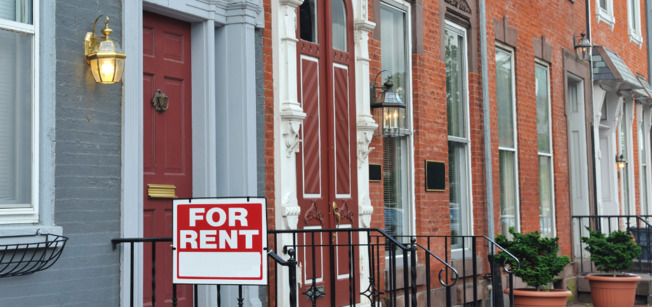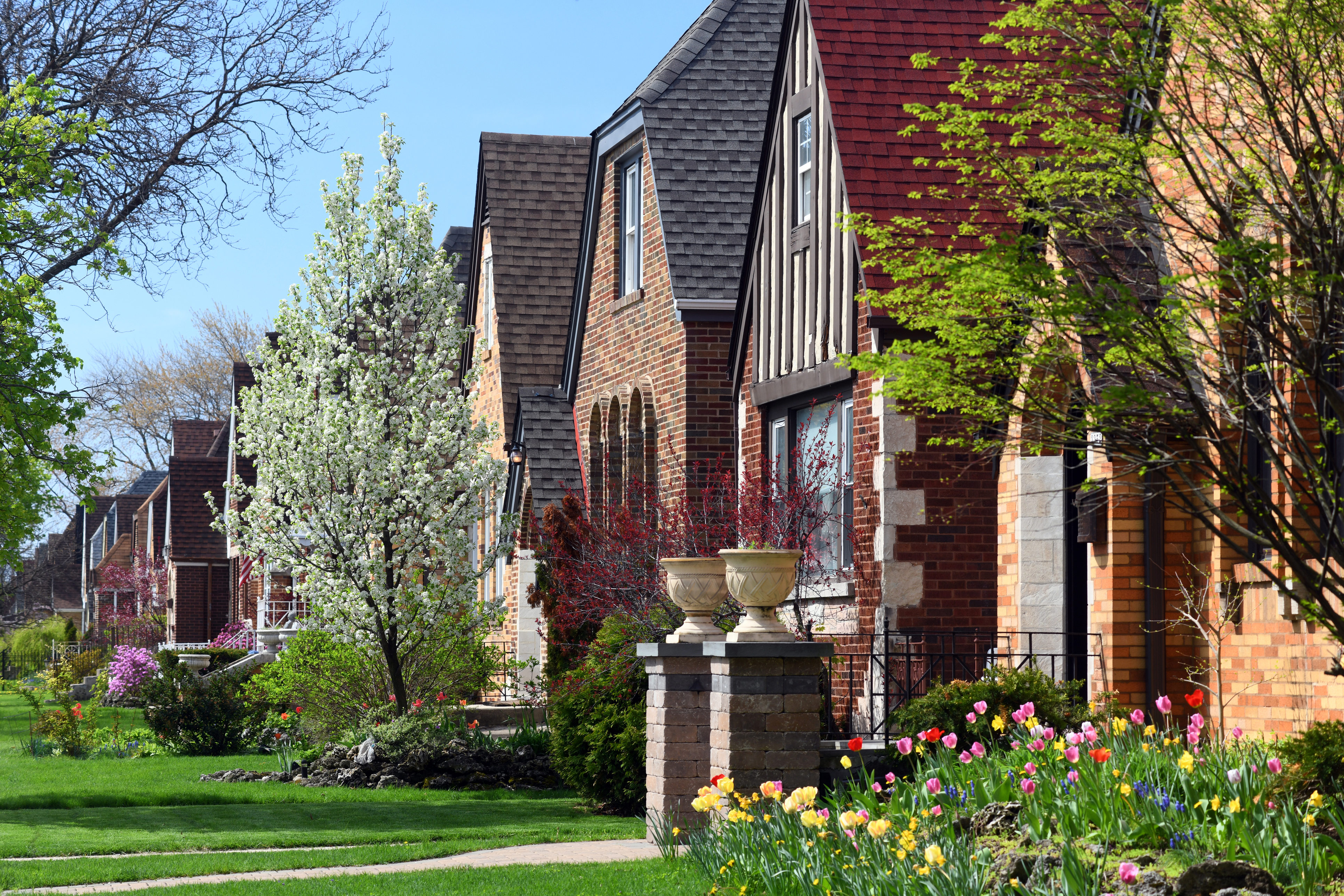
Moving From the City to the Suburbs? Here’s How Much You Can Save in Rent

By Lilly Milman
Mar 31, 2023
There’s a lot of reasons renters may want to move from a big city’s center to its surrounding suburbs: bigger apartments and houses, more greenspace, less traffic, and, of course, cheaper average rent. If you’re considering relocating to save some cash and reduce your housing costs, you’re not alone. According to a survey done last year, 23% of respondents said that a lower cost of living was a major motivator for moving — and our rental data shows that you don’t have to go too far to find significant discounts.
We analyzed our rental data to break down how much you can save by moving from the city center to the suburbs in the following areas:
We looked at median monthly rent prices for one-bedroom apartments in each major city and its surrounding suburbs, as well as the median cost per square foot to find out where you can get the biggest bang for your buck. Curious if you’re missing out on some life-changing deals? Keep reading to learn more about big suburb savings.
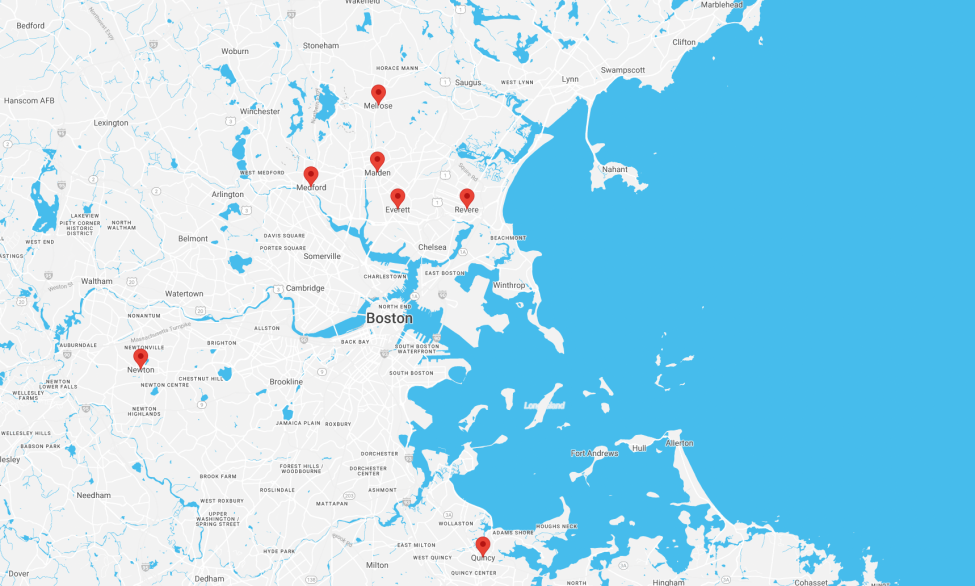
In the Boston area, you don’t have to go very far from the city center to find big savings — which is good news, considering that Boston ranked No. 4 globally on the list of 10 Highest Traffic Delay Times in INRIX’s 2022 Global Traffic Scorecard. All of the suburbs we compared to the city are less than 8 miles away from its center — and on average, their median costs per square foot are $1.25 less than the whopping $4.48 figure in Boston. Luckily, they also all have public transportation options that can keep you away from the congestion. Most are within reach of the MBTA’s T system — but all are located on bus routes or have commuter rail stations.
Everett is the closest and also the cheapest suburb outside of Boston on our list, with a distance of only 3.2 miles from the city center of Boston, a median rent of $1,878 for a one-bedroom apartment, and a median cost per square foot of $2.71. That makes Everett about 27% cheaper to live in than Boston. Plus, the median commute time is between only 30 and 34 minutes, according to Stacker.
Annual Savings When Moving From Boston's City Center to Surrounding Suburbs
| City | Population | Miles from City Center | Median 1-Bed Monthly Rent | Median Cost Per Square Foot | Annual Rent Savings |
|---|---|---|---|---|---|
| Boston | 692,600 | 0 | $2,600 | $4.48 | 0 |
| Everett | 46,451 | 3.20 | $1,878 | $2.71 | $8,664 |
| Malden | 60,470 | 4.86 | $1,973 | $3.25 | $7,524 |
| Revere | 53,073 | 4.96 | $2,250 | $3.76 | $4,200 |
| Medford | 57,341 | 5.06 | $2,475 | $3.60 | $1,500 |
| Melrose | 28,016 | 6.59 | $2,584 | $3.23 | $192 |
| Quincy | 94,470 | 7.77 | $2,272 | $2.99 | $3,936 |
| Newton | 88,414 | 7.91 | $2,350 | $3.06 | $3,000 |
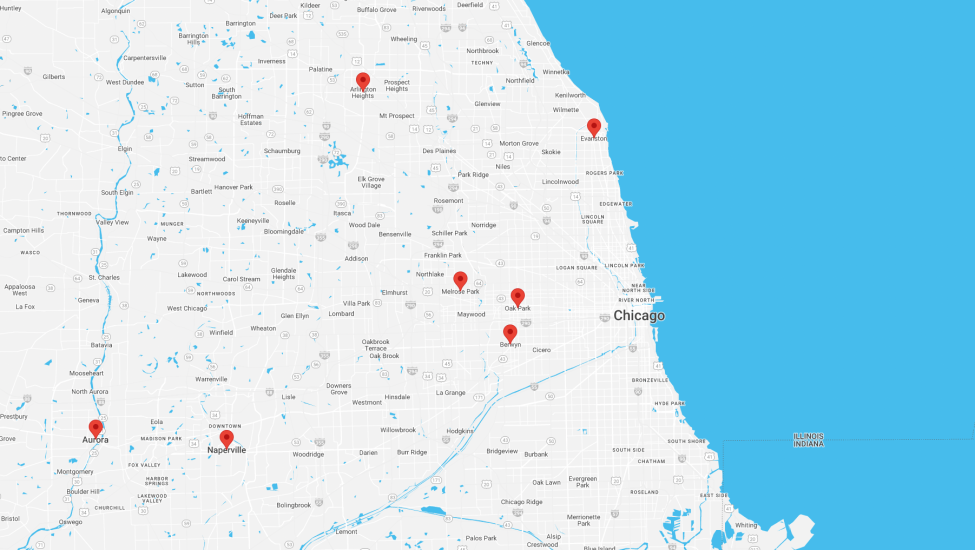
If you’ve ever lived in Chicago, then you’re probably used to gridlock. While the city boasts a robust public transportation system, it is still ranked as the No. 2 worst city for traffic delay times in the world by INRIX (and No. 1 on the list of U.S. cities). Chicago is also one of the noisiest cities in the country, according to a sound mapping project done by the National Park Service. Moving to the suburbs can alleviate both of these issues — while also giving you the opportunity to save money on rent and find a bigger space.
If you are in the field of engineering or technology, moving farther out of the city could actually get you closer to big opportunities. From our list, both Aurora and Naperville are located on the Illinois Technology and Research Corridor — a region of commerce and industry where dozens of major companies like Ace Hardware, Hyundai, and MetLife have a strong presence. Not to mention, the area is also home to a dozen higher education institutions and notable research institutions. So, while commuting to Chicago from a suburb like Aurora or Naperville would take you around an hour by car or train, if you made the move and scored a job in one of these fields, you may be able to say goodbye to this congested commute altogether. Plus, renting a one-bedroom in Aurora rather than Chicago would save you $0.58 per square foot and $5,364 a year in rent. Naperville offers slightly smaller savings opportunities, with a median price of $2.03 per square foot ($0.52 less than Chicago) and a monthly median rent price of $1,536 ($159 less per month than in Chicago).
Annual Savings When Moving From Chicago's City Center to Surrounding Suburbs
| City | Population | Miles from City Center | Median 1-Bed Monthly Rent | Median Cost Per Square Foot | Annual Rent Savings |
|---|---|---|---|---|---|
| Chicago | 2,693,980 | 0 | $1,695 | $2.55 | 0 |
| Oak Park | 52,381 | 8.28 | $1,542 | $2.33 | $1,836 |
| Berwyn | 54,391 | 8.65 | $1,050 | $1.47 | $7,740 |
| Evanston | 73,473 | 12.10 | $1,450 | $2.13 | $2,940 |
| Melrose Park | 24,703 | 12.20 | $1,050 | $1.64 | $7,740 |
| Arlington Heights | 74,760 | 23.60 | $1,656 | $2.33 | $468 |
| Naperville | 148,449 | 29.10 | $1,536 | $2.03 | $1,908 |
| Aurora | 197,757 | 35.00 | $1,248 | $1.97 | $5,364 |
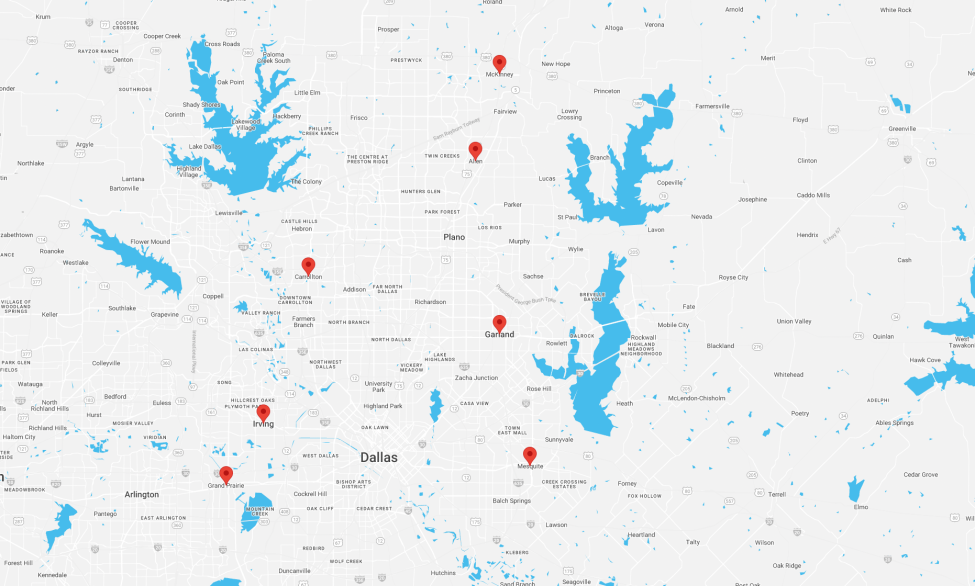
Dallas is unique on our list because, in some cases, moving further outside the city will cost you when it comes to monthly rent prices. But if it’s cheaper square footage that you’re looking for, then each of the suburbs on our list will offer you a better deal by that metric.
Grand Prairie, Allen, and McKinney all have a higher median monthly rent price for a one-bedroom apartment ($1,448, $1,432, and $1,460, respectively) than Dallas itself (where the median rent for a one-bedroom apartment is $1,419). However, on average these three suburbs have a median cost per square foot that’s 5.6% lower than that of Dallas. Plus, Allen and MicKinney both rank on Niche’s list of Top 25 Best Suburbs in Dallas-Fort Worth. Both are also on Thrillist’s list of 13 Dallas Suburbs You Should Absolutely Visit, along with Carollton and Irving, which are also on our list. Thrillist lauds each of these suburbs for their nightlife options, diverse food and entertainment and walkable downtowns.
While a moderate commute is a given from any of the Dallas suburbs (with the closest on our list, Irving, being 11 miles away from Dallas and involving a 20-minute commute by car), traffic is less of an issue in this metro area than in the others on our list. INRIX ranks it as 58 on its global list of traffic delay times. According to INRIX, Dallas commuters only lose 56 hours a year to commuting — which is slightly less than a third of the 155 hours a year lost by Chicagoans.
Interested in moving to Dallas? Our new Verified Listings program (available in Texas and coming soon to other markets!) gives you access to select properties that we’ve vetted. Their listings also include video tours that we've produced ourselves, so you can get the full picture of what a property looks like. Even better, you’ll work directly with one of our leasing advisors to apply online — and we’ll even cover the application fees. View Verified Listings in Austin, Dallas, and Houston.
Annual Savings When Moving From Dallas's City Center to Surrounding Suburbs
| City | Population | Miles from City Center | Median 1-Bed Monthly Rent | Median Cost Per Square Foot | Annual Rent Savings |
|---|---|---|---|---|---|
| Dallas | 1,343,570 | 0 | $1,419 | $1.98 | 0 |
| Irving | 239,798 | 11.50 | $1,337 | $1.85 | $984 |
| Mesquite | 140,937 | 12.20 | $1,133 | $1.64 | $3,432 |
| Garland | 239,928 | 13.30 | $1,225 | $1.67 | $2,328 |
| Grand Prairie* | 194,543 | 14.40 | $1,448 | $1.85 | -$348 |
| Carrollton | 139,248 | 15.80 | $1,393 | $1.87 | $312 |
| Allen* | 105,623 | 24.00 | $1,432 | $1.93 | -$156 |
| McKinney* | 199,177 | 30.20 | $1,460 | $1.83 | -$492 |
** Grand Prairie, Allen, and McKinney, TX each have a higher medium monthly rent price for a one-bedroom apartment — so the negative numbers represent how much more you'd be spending on rent if you moved to one of these suburbs from the Dallas city center. *
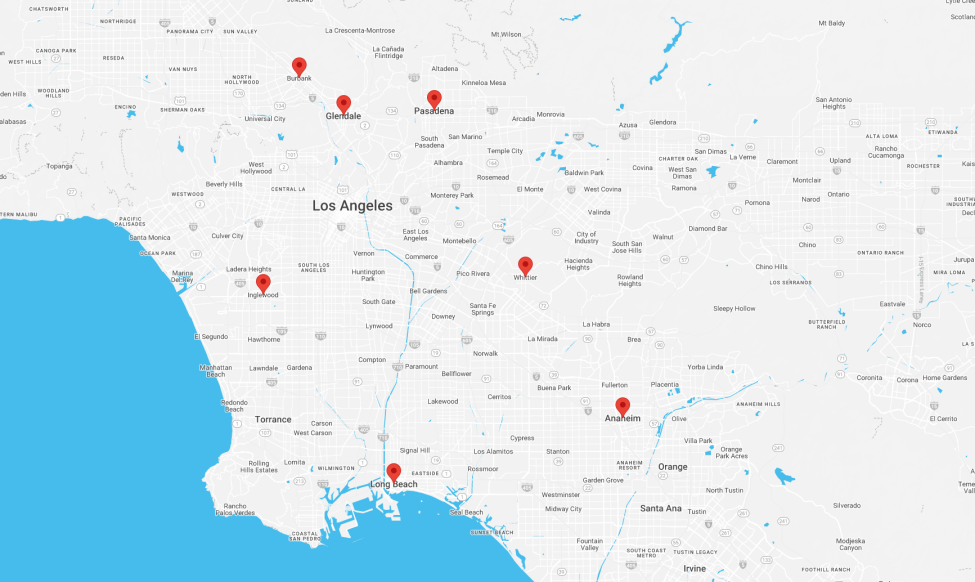
Los Angeles isn’t exactly known for its easy commutes or public transit systems. INRIX ranked it as the No. 6 on list of most congested urban areas in the U.S. and The Street reports that the city’s average downtown speed is only 19 mph. According to data from the 2020 American Community Survey by the U.S. Census Bureau, the average commute time in Los Angeles was around 31 minutes, with 82.6% of the population driving to work and only 4.5% taking public transportation. Living in downtown LA might (emphasis on might) shorten your daily commute, but it’ll cost you. Our list of suburbs have longer commutes than the reported 2020 average, but they also have much lower rent prices. Plus, if you find work locally in one of the suburbs, then you can cash in your savings and escape the congestion altogether.
If you were commuting to downtown LA from Inglewood, Glendale, Pasadena, or Burbank, your travel time likely would sit around the city’s average commute time. You’d find the biggest rent savings in Inglewood, where you stand to save around $4,320 a year in rent when compared to LA based on the median price for a one-bedroom apartment in each area. In the other three closest suburbs on our list, you would save an average of $768 a year.
If you are okay with extending your commute, you can find even better deals in further suburbs like Long Beach. Not only will you have the Pacific Ocean in your backyard, but you’ll also be paying $0.48 less per square foot and saving around $5,604 a year in rent.
Annual Savings When Moving From Los Angeles's City Center to Surrounding Suburbs
| City | Population | Miles from City Center | Median 1-Bed Monthly Rent | Median Cost Per Square Foot | Annual Rent Savings |
|---|---|---|---|---|---|
| Los Angeles | 3,979,580 | 0 | $2,226 | $3.33 | 0 |
| Inglewood | 108,151 | 8.77 | $1,866 | $2.83 | $4,320 |
| Glendale | 199,303 | 8.93 | $2,136 | $3.34 | $1,080 |
| Pasadena | 141,029 | 9.53 | $2,200 | $3.22 | $312 |
| Burbank | 102,511 | 10.40 | $2,150 | $3.36 | $912 |
| Whittier | 85,098 | 14.20 | $1,710 | $2.77 | $6,192 |
| Long Beach | 462,628 | 18.10 | $1,759 | $2.91 | $5,604 |
| Anaheim | 350,365 | 26.60 | $1,997 | $2.85 | $2,748 |
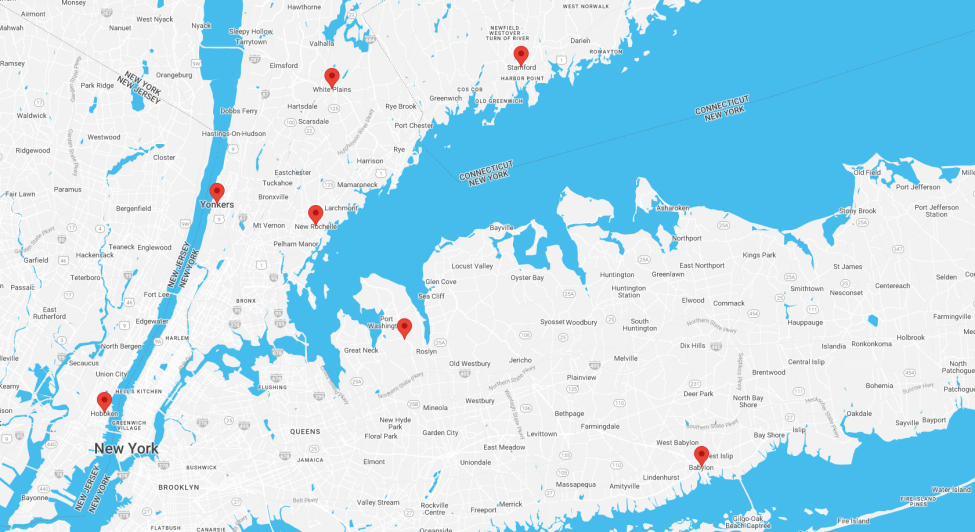
If you are working in New York City every day, then it can pay to move out of state. Both Hoboken, NJ and Stamford, CT offer significant savings.
By living in Hoboken instead of Manhattan, you can save $544 a month in rent — which adds up to $6,528 a year. Hoboken is also only one stop (about 15 minutes) away from Manhattan on the PATH Train, which only costs $2.75 a ride. From the suburbs on our list, Hoboken has the easiest commute by far.
By living in Stamford, you can save even more on rent. With a median monthly rent price of $2,330 for a one-bedroom apartment in Stamford, you’d be paying $27,960 in rent per year — which is $13,176 less than you’d be paying in NYC and $6,648 less than you’d be paying in Hoboken. Commuting from Stamford to Manhattan via the Metro-North Railroad would take about an hour each way, and each trip (if you buy in single tickets rather than, say, a monthly pass) would cost around $15. If you did purchase a monthly pass at the current fare of $301.50, you’d be spending $3,618 a year on transportation. With your rent savings totaling at more than triple the added transportation cost, this move would still be well worth it.
You can find the biggest bang for your buck, however, in Yonkers and in Babylon — where the median cost per square foot ($2.67 and $2.66, respectively) is less than half of what it is in NYC ($5.93).
Annual Savings When Moving From New York's City Center to Surrounding Suburbs
| City | Population | Miles from City Center | Median 1-Bed Monthly Rent | Median Cost Per Square Foot | Annual Rent Savings |
|---|---|---|---|---|---|
| New York City | 8,336,820 | 0 | $3,428 | $5.93 | 0 |
| Hoboken, NJ | 52,677 | 2.52 | $2,884 | $4.34 | $6,528 |
| Yonkers | 200,370 | 17.70 | $1,900 | $2.67 | $18,336 |
| North Hempstead | 230,531 | 18.50 | $2,392 | $3.57 | $12,432 |
| New Rochelle | 78,557 | 19.00 | $2,170 | $3.38 | $15,096 |
| White Plains | 58,109 | 25.10 | $2,107 | $2.93 | $15,852 |
| Babylon | 211,207 | 34.00 | $2,270 | $2.66 | $13,896 |
| Stamford, CT | 129,638 | 35.70 | $2,330 | $3.12 | $13,176 |
Methodology: To determine the annual savings when renting a one-bedroom apartment, we took the median rent of each city and suburb for a one-bedroom apartment, and calculated the difference between how much one would have paid in rent over the course of a year in the city center and how much they would have paid in rent over the course of a year in the suburb. We analyzed our rental data to find the median rent prices for a one-bedroom apartment in each location, aggregating data from the last three months. We only looked at the data for cities with populations higher than 20,000 people that were within 45 miles of the city center. The above data also includes only cities and towns that meet adequate inventory thresholds during the past month.
Ready to make an apartment in the suburbs your new home? Let us help you find the best deal. At ApartmentAdvisor, we give every listing a deal rating to let you know if an apartment is fairly priced for the market.
Top cities
Atlanta Apartments
1,999 apartments starting at $600/month
Austin Apartments
4,949 apartments starting at $600/month
Baltimore Apartments
1,472 apartments starting at $500/month
Boston Apartments
3,499 apartments starting at $940/month
Charlotte Apartments
2,903 apartments starting at $450/month
Chicago Apartments
4,012 apartments starting at $450/month
Dallas Apartments
5,609 apartments starting at $604/month
Fort Worth Apartments
2,193 apartments starting at $600/month
Houston Apartments
4,504 apartments starting at $590/month
Las Vegas Apartments
1,081 apartments starting at $704/month
Los Angeles Apartments
11,535 apartments starting at $625/month
Miami Apartments
544 apartments starting at $1,000/month
Milwaukee Apartments
928 apartments starting at $465/month
New York Apartments
4,118 apartments starting at $488/month
Oakland Apartments
608 apartments starting at $885/month
Orlando Apartments
842 apartments starting at $825/month
Philadelphia Apartments
3,657 apartments starting at $550/month
Phoenix Apartments
4,153 apartments starting at $599/month
Pittsburgh Apartments
1,223 apartments starting at $600/month
Portland Apartments
2,519 apartments starting at $599/month
Raleigh Apartments
1,367 apartments starting at $750/month
San Antonio Apartments
3,925 apartments starting at $525/month
San Diego Apartments
2,960 apartments starting at $650/month
San Francisco Apartments
436 apartments starting at $675/month
San Jose Apartments
405 apartments starting at $1,300/month
Seattle Apartments
3,623 apartments starting at $450/month
Tampa Apartments
1,078 apartments starting at $800/month
Washington DC Apartments
2,878 apartments starting at $745/month


